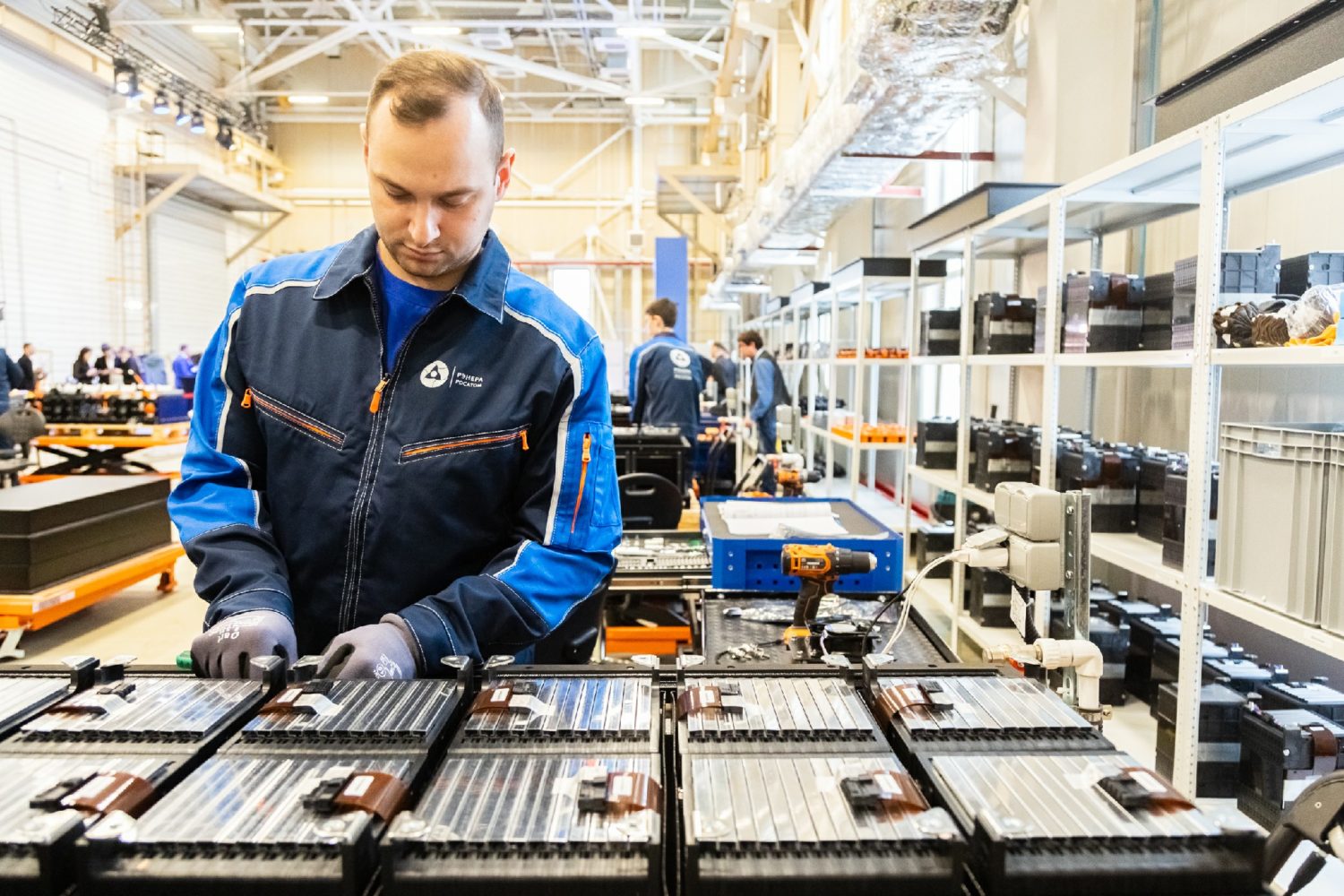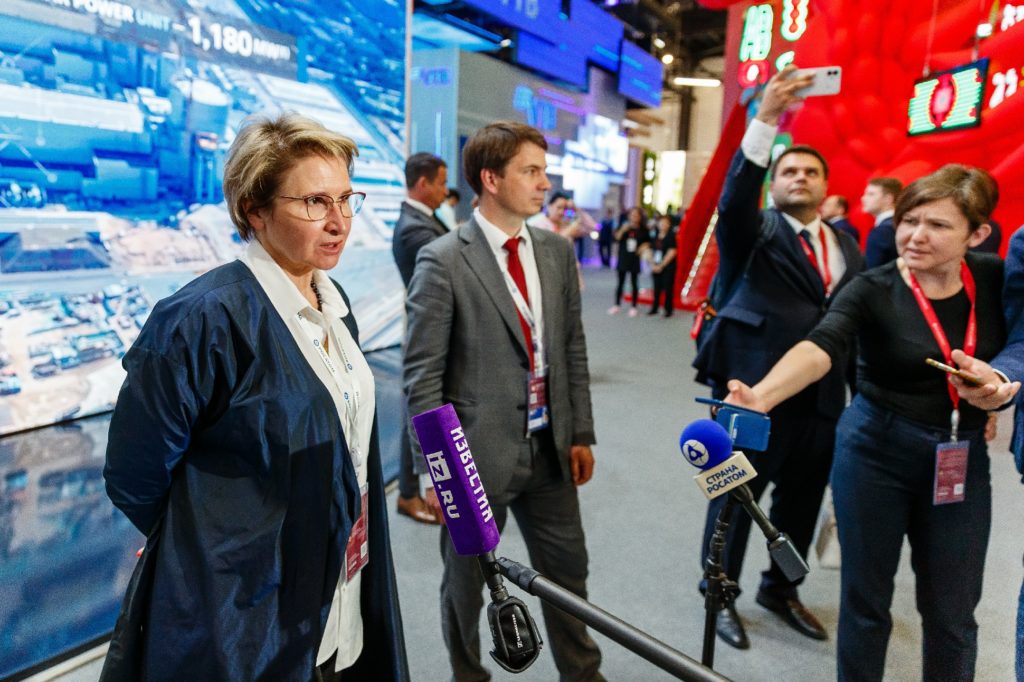
Rosatom Enters Electric Mobility
back to contentsThe fast-growing market segment, electric mobility has become an important new business for Rosatom. With two large battery factories under construction, an electric motor plant to come into production next year and an EV charging network growing, Rosatom contributes to the full-fledged development of the electromobility industry in Russia.
Rosatom first approached the electric mobility market in 2019, having bet on its rapid growth in the future. By reducing emissions and noise, electromobility has a positive effect on the environment, thus improving the quality of life in cities. Besides, electric vehicles are emerging as a new and increasingly important consumer of electricity. It is essential to have a clean source of electricity for this purpose. This is the case with Rosatom, whose nuclear power plants produce carbon-free electric power.
With this in mind, Rosatom decided to enter the market of products and solutions for the electric mobility segment. Among its key products are traction batteries for electric vehicles and commercial power storage systems for the power sector and industrial applications. So far, the company is capable of producing as little as 450 MWh per year, but its production capacity will increase to 8.5 GWh per year after the launch of two factories in Kaliningrad and Moscow in 2025 and 2026. This is sufficient to supply batteries for about 100 thousand electric cars. Rosatom also operates three R&D centers, which have obtained over 100 patents.
It is already clear that batteries will be in high demand from Russian electric car manufacturers. In an electric vehicle, the battery accounts for about 40 % of production cost, so Rosatom and its partners are working on the ‘battery as a service’ distribution model: the battery will be excluded from the price of the electric car, and the owner will make monthly lease payments for it. After the battery degrades to a certain point, it will be returned to the manufacturer to be used for stationary applications in more sparing charging and discharging cycles. This approach improves efficiency and sustainability by extending the useful life of batteries. In turn, consumers will have a better purchasing experience and be confident that they can replace the battery with a new one at any time, extending the service life of their electric vehicles.
From feedstock to vehicle
Rosatom strives for technological independence by building an end-to-end production chain, which starts with lithium feedstock. Its mining division is developing a lithium production project at the Kolmozerskoye lithium deposit in Russia’s Murmansk Region. Rosatom’s subsidiary Uranium One Group is engaged in the lithium business abroad. Last year, Uranium One and the Bolivian state-run company Yacimientos de Litio Bolivianos (YBL) signed a framework agreement to build a lithium carbonate production facility in Bolivia. The fuel division of the Russian nuclear corporation is engaged in the development of materials for cathodes, anodes and electrolyte used in the fuel cells.
Production of electric drives for electric vehicles is the second line of Rosatom’s electromobility business. Next year, Rosatom will put another important component, an integrated traction drive, into serial production. The first electric drives will be installed in the Atom-branded electric cars, which will be produced at the Moskvich automobile plant from 2025.
The third line of business is the production of electronic components. The fourth business line is the design and engineering of electric vehicles and development of composite bodies. The concept of a futuristic last-mile delivery van was presented at Atomexpo 2024. The advantage of the concept is its universal platform that makes it economically feasible to manufacture cars even in small lots (about 2 to 10 thousand cars a year).

Electric charging infrastructure is the last but not the least important business line in the electromobility segment. Last year, Rosatom was joined by Parus Elektro, an EV charging market leader that has production capacity and competencies to manufacture electric charging points. Rosatom plans to use them in developing both fast and slow charging networks.
An alternative option being developed in parallel is a robotic system for fast (2 to 10 minutes) battery replacement. A pilot project has been launched in partnership with one of the customers to streamline operation processes and make the solution ready for upscaling.
Rosatom is presented in every key segment of the electromobility market, working in close contact with its partners. It assists government agencies in developing the regulatory framework and participates in urban projects to deploy a network of electric charging stations. It partners with EV manufacturers to make electric vehicles more affordable and thus expand this market segment. Finally, Rosatom promotes electric mobility among consumers and studies user experience in an effort to make it as comfortable as possible.

There are examples of cooperation with foreign partners, too. For example, Rosatom supplies energy storage systems to Belarusian manufacturers of increased travel range trolleybuses, which, in turn, are supplied to replenish the passenger transportation fleet in Saint Petersburg. Entering foreign markets with electromobility solutions is one of the objectives of this business. “All of our business lines involve entering foreign markets. This is important because it means we are globally competitive,” Natalia Nikipelova, President of Rosatom’s fuel company TVEL, said at Atomexpo.
To the beginning of the section




